Hijab Articles
How to Wear Wedding Hijab: Look Dashing on Your Wedding Day!
Preparing for your wedding is nothing short of an adventure.
Between putting the final touches on your house decor and doing the final fittings for your gown, you can’t be bothered choosing from 100+ hijab styles for your wedding day.
Here, we’ll give you all the tips and tricks you need for styling your wedding hijab without giving you too many options, so you don’t get distracted.
If you don’t know how to wear wedding hijab, here’s everything you need to know!
How to Wear Bridal Hijab
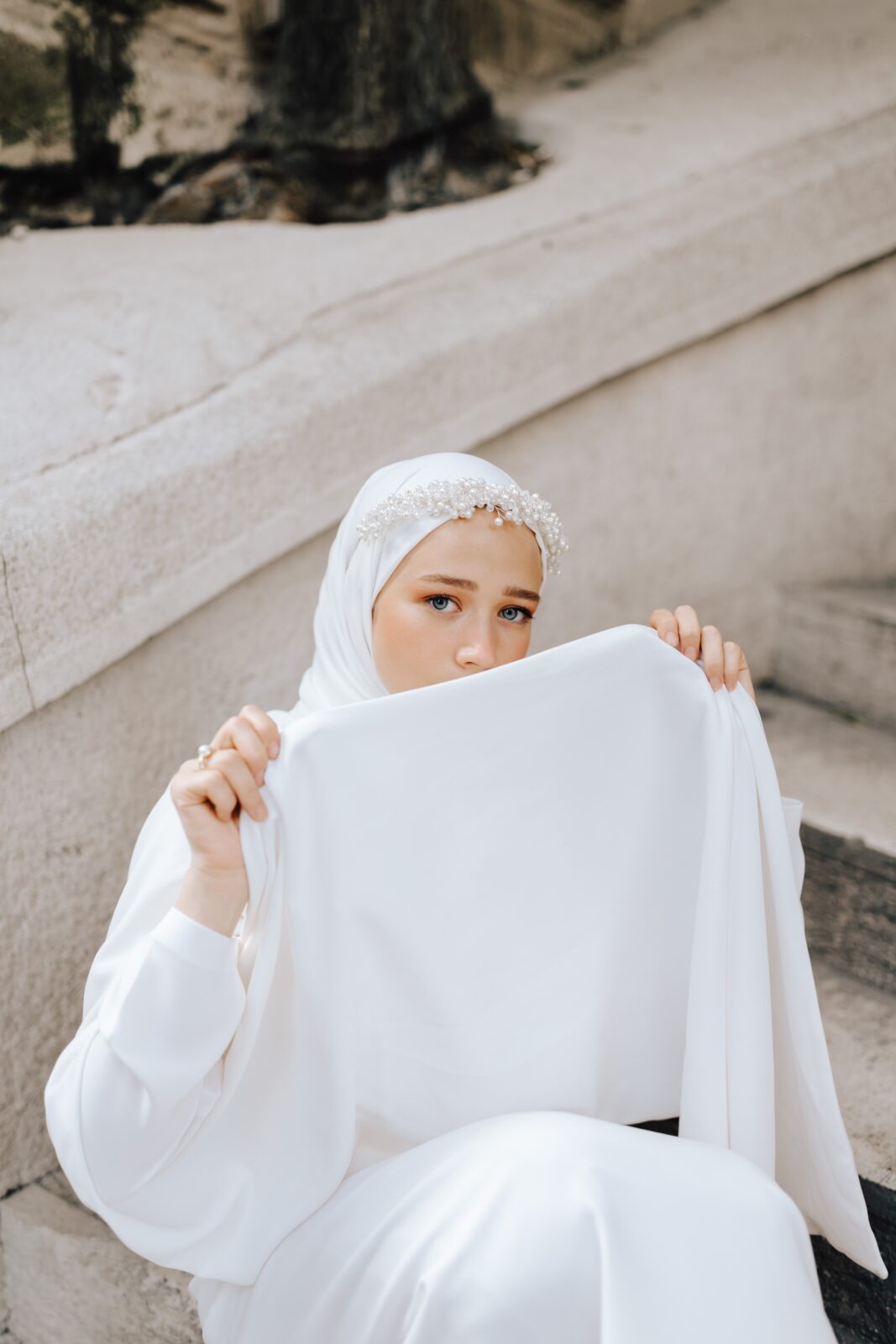
There’s no one-size-fits-all option when it comes to bridal hijab. The style you’ll choose should depend on your facial structure, skin tone, and dress.
Some brides would look better in simpler styles, and some brides need an extravagant hijab style to finish their look.
In both cases, you’ll find a style that suits you here:
Traditional Hijab
Simple styles can never fail you. If you don’t want to stray far from what you’re used to, and you can’t find a bridal style you love, why not try to wrap a traditional hijab?
Traditional wedding hijab is often a soft white scarf that’s wrapped like a casual one, except that it’s paired with a veil and maybe a hijab accessory to accentuate the look. Some brides also prefer to do without any accessories to keep their look simple.
In the case of a traditional hijab, you’ll have your hair stylist style your hair in a regular bun to hide your hair beneath the hijab.
Turban
Turbans are ideal for dresses with neck coverage because they don’t cover the neck. They only cover your hair.
If your dress has a regular neckline and you don’t mind showing your neck, a turban-style hijab will also be a wonderful choice for you. It depends on your dress style.
A turban-style hijab generally goes with most dress models because it’s simple, yet you can make it extravagant by adding a hair accessory or using lace embellishments.
The best thing about turban hijabs is that they go exceptionally well with traditional veils. You can have a simple white turban without any detailing, and have all the lace details in the veil for your royal look.
Head Jewelry
A lot of brides choose to style their wedding hijabs with a piece of head jewelry.
Although head jewelry is originally meant to be put on your hair, you can make it work with your hijab as well. Most brides get crystal or pearl headpieces and place them under their hijabs. So, the headpiece dangles or wraps around their foreheads.
On the other hand, some brides choose to keep the headpiece on top of the hijab. A few brides even choose to go with a tiara on the veil, but it mostly only works with extravagant dresses.
Hooded Cape
Depending on your dress’ model, you can integrate a hooded cape into it to cover your head.
You can go about this two ways: if you’re having a regular wedding with men and women in the same celebration, you can wear a turban to cover your head, then cover your head and neck using the hooded cape.
Alternatively, if you’re having a gender-segregated wedding, you can wear the hood for the short while that you’ll be seen by other men, and then you can take it off for the women-only ceremony.
You’ll have to discuss the idea of a hooded cape with your dress designer before attempting to do it because it largely depends on the dress.
Capes mostly go well with subtle gowns that aren’t too flowy.
Tips for Styling Your Wedding Hijab
Now, you probably know how to wear wedding hijab, but that’s not it. You still need some tips for styling it, so you end up satisfied with the look.
Here are some tips to keep in your mind when choosing how to style your wedding hijab.
No Layering
Remember that the main focus of your look is your gown, not your hijab. So, avoid layering it or making it seem thick. The simpler, the better because you don’t want it to stand out. You want your hijab to blend in seamlessly with the rest of your look, and the way to do so is to avoid layering and keep it simple.
It’s also better to stay clear of ruffles, too much lace, or over-the-top embroidery. Keep those for your bridal veil.
Headpiece or No Headpiece?
It’s better to be careful when choosing your hijab accessory. You don’t always have to wear a headpiece; it may be a bit too much if your dress is already layered and features plenty of fabrics.
So, keep in mind the design of your dress when choosing. If you’re wearing a simple dress, you can go over the top with your headpiece if you’d like. Other than that, it’s better to lay low.
Be Careful With Accessories
Although your accessories aren’t technically a part of your hijab, they still play a huge role in how the look will turn out.
If you’re wearing a dress with a high neck, you’ll have to ditch your necklace. It’s better then to wear a headpiece rather than crowding the dress with a necklace.
Likewise, if your dress has too much going on in the front, adding a necklace to the mix may be unnecessary. It’d be better to wear a bracelet and maybe a ring and ditch the necklace.
Final Thoughts
Now that you know how to wear wedding hijab, you can focus on the rest of the details.
Choosing a style among hundreds is hard; we’ll give you that. That’s why it’s better to keep your options limited and only look at a couple of styles that you like.
Remember to go with a turban if you’re wearing a dress with full neck coverage. Other than that, you can discuss the idea of a hooded cape with your stylist. It’s one of the best modest hijab styles for brides.
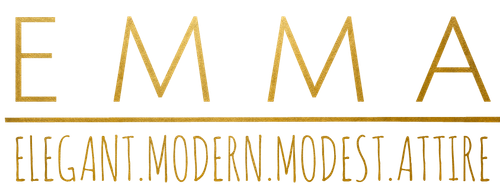
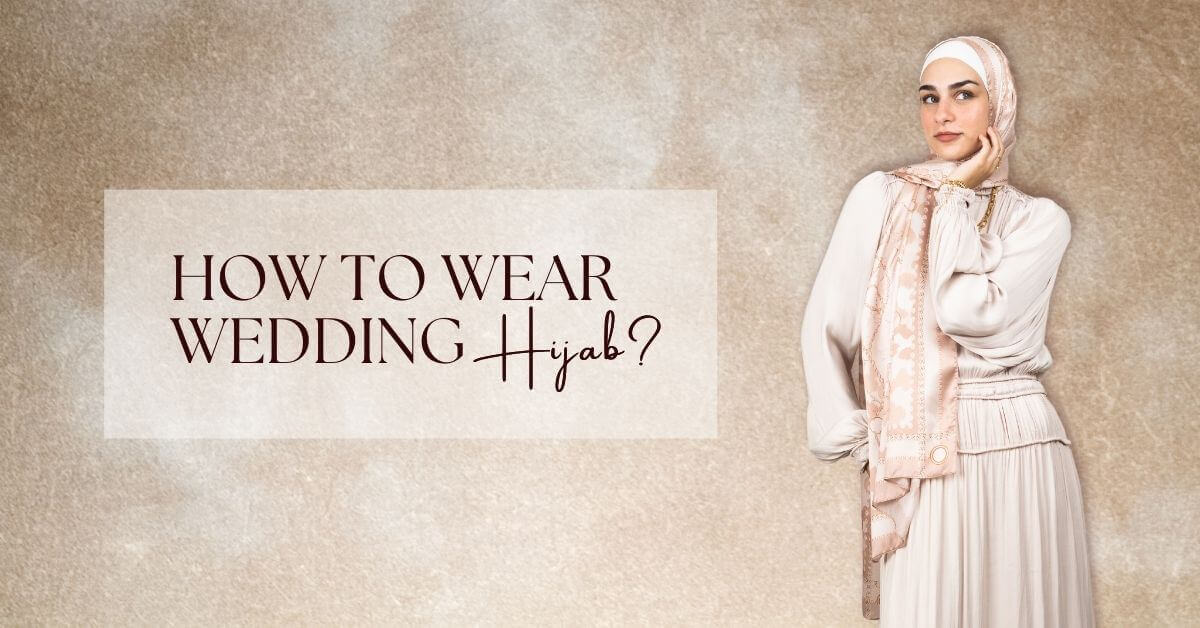
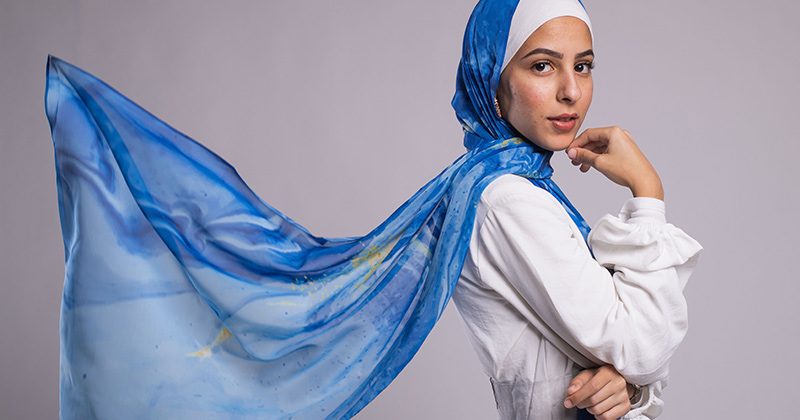
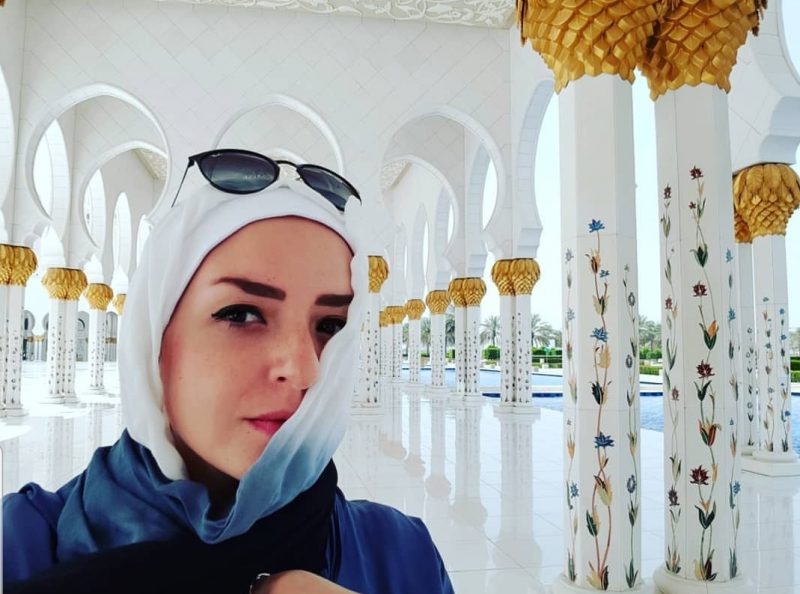

Please keep me updated with the latest trends. Thank you. Jazakallah O Khaira.
Is there a cultural appropriation concern when non-Muslim individuals wear a hijab for fashion or as a statement, rather than for religious reasons or as a symbol of modesty? How can one respectfully incorporate hijab styles into their wardrobe without offending the Muslim community?
of course, modesty I encouraged in all religions, and society benefits a lot when both man and woman follow that regardless of their faith.